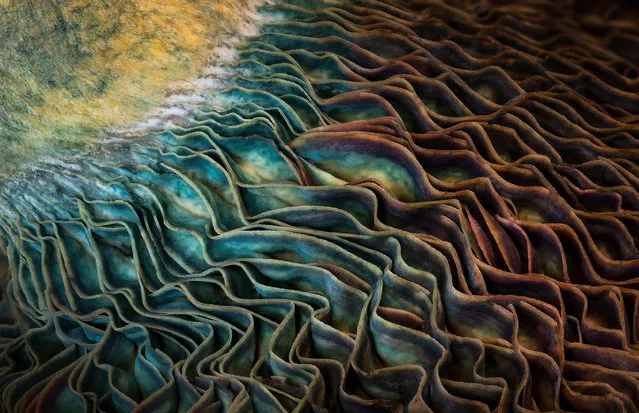
Magical Mushroom; Art of Nature winner. “Is it waves crashing on to shore? A landscape of furrowed canyons? The topography of a distant planet? In fact, it’s the gills of a fungus from the genus Lactarius, better known as milk cap mushrooms for the milky, latex-like liquid they ooze when cut. J Fritz Rumpf was foraging for mushrooms in Arizona’s White Mountains when he picked up this one and noticed the colours of its gills. Many species of milk cap ‘bruise’ when chemicals in their fruiting bodies are exposed to air, turning them a murky blue-green”. (Photo by J. Fritz Rumpf/BigPicture)
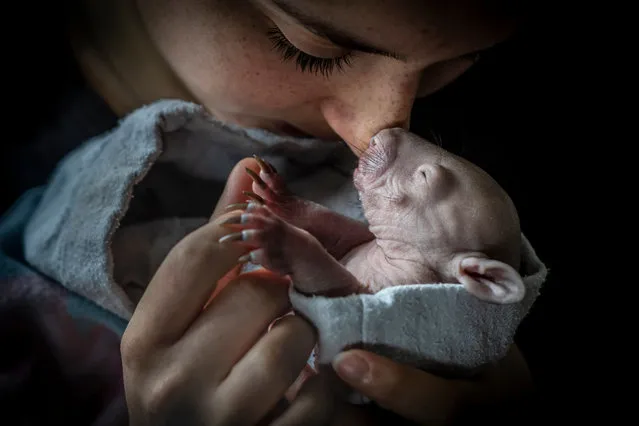
Nose to Nose; Human/Nature winner. “Doug Gimesy was documenting work at the Joey and Bat Sanctuary near Melbourne when he met a wombat (Vombatus ursinus) whose mother had been killed by a car. Gimesy watched as a young veterinary student bottle-fed the orphaned joey, then touched her nose to the joey’s in a tender moment of interspecies bonding”. (Photo by Doug Gimesy/BigPicture)

Coyote Crossing; grand prize winner. “Chicago coyotes typically live only about three years, compared to 10 years on average elsewhere in the wild and up to 18 years in captivity. Their most common cause of death is being struck by a car. But coyotes have found ingenious ways to coexist with humans. In the Windy City, where Corey Arnold tagged along with scientists from the Cook County Urban Coyote Research Project, coyotes regularly use train trestles like this one to circumvent busy highways”. (Photo by Corey Arnold/BigPicture)
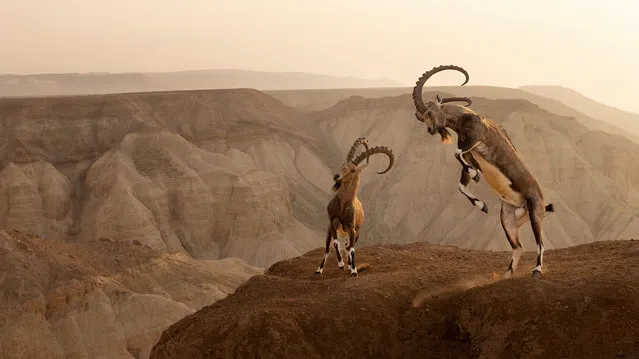
Life on the Edge; Terrestrial Wildlife finalist. “Nubian ibexes (Capra nubiana) live on the knife edge of survival, in deserts with scant vegetation and harsh climates. They also live at the literal edge of cliffs.Males of the species grow backward-curving horns that can be more than a metre (up to four feet) long. They use these impressive weapons to defend against predators and to compete with others for breeding rights, as photographer Amit Eshel captured in this image of two clashing males in Israel’s Zin Desert”. (Photo by Amit Eshel/BigPicture)
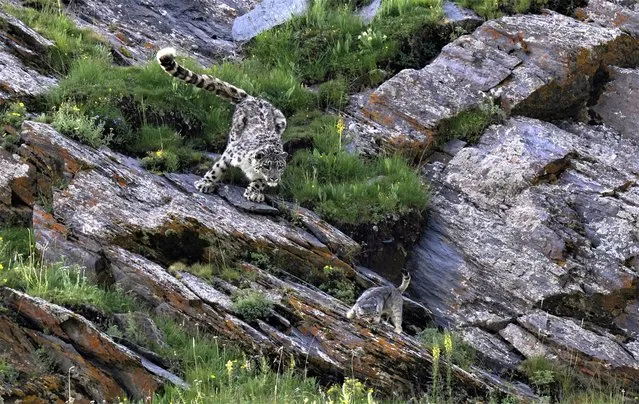
Spotted; Terrestrial Wildlife winner. “At first glance, this might seem like a mother snow leopard (Panthera uncia) playing with her kitten, but a closer look reveals a lack of distinct spots on the cloudy fur of the smaller cat. The smaller, fully grown feline is actually a Pallas’s cat, or manul (Otocolobus manul), a small wildcat whose range across Central Asia overlaps with its better-known cousin. When Donglin Zhou saw a snow leopard stealthily approaching a mother Pallas’ cat on the Qinghai-Tibet plateau, he was astonished. “Both species are hard to see at any time”, he said, “let alone together”. (Photo by Donglin Zhou/BigPicture)
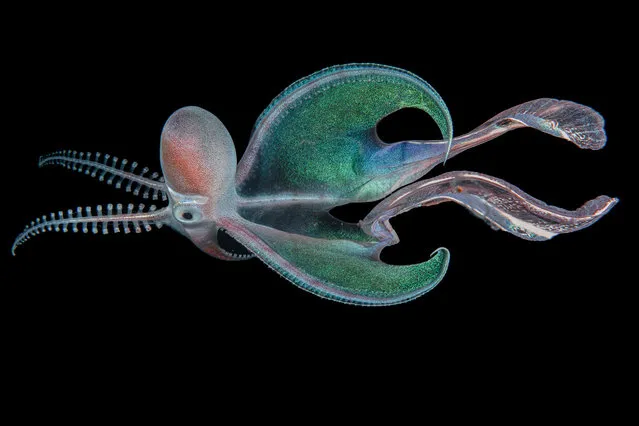
Stunning Cephalopod; Aquatic Life finalist. “The iridescent symmetry of this blanket octopus plays a key role in the cephalopod’s success as a predator. Most blanket octopuses observed are females, like this one photographed in the Philippines. Females can grow up to two metres long and up to 40,000 times heavier than the walnut-sized males, and sport a characteristic fleshy ‘blanket’ draped over their tentacles, which makes them appear even larger”. (Photo by Heng Cai/BigPicture)
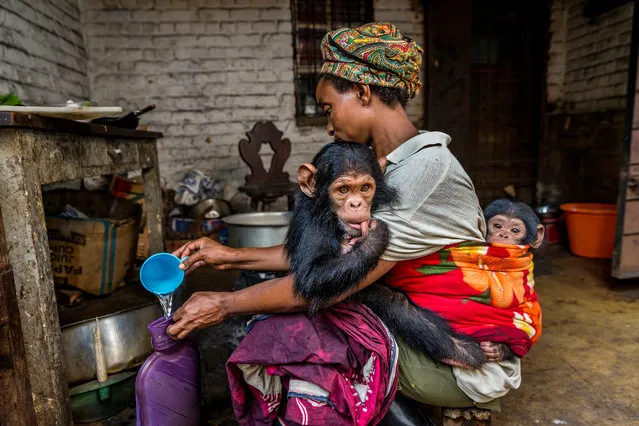
All My Children; Human/Nature finalist. “At the Lwiro Primate Sanctuary in Kahuzi-Biega National Park in the Democratic Republic of the Congo, Photographer Marcus Westberg, who spent weeks at the sanctuary, said that caregivers treat the chimpanzees as tenderly if they’re human children, and the young chimps, likewise, often act like kids. Wild chimps typically stay close to their mothers until they’re about 5 years old, so when a mother is killed by poachers, the separation can cause irreparable harm for young, developing chimps”. (Photo by Marcus Westberg/BigPicture)
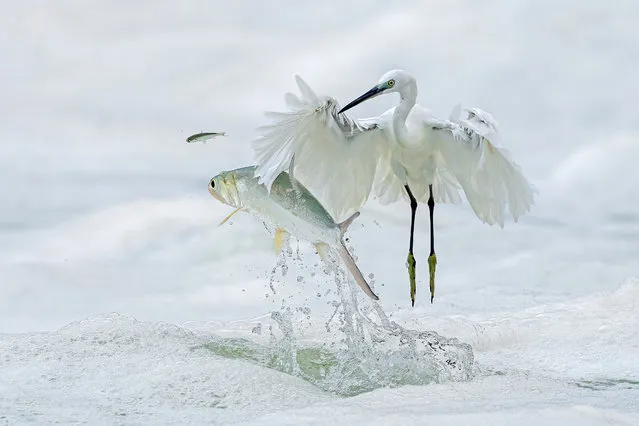
Catch Me If You Can; Winged Life winner. “This egret (Egretta garzetta) in a lake near Xiamen, China was caught off-guard when the small fish it had been eyeing was chased clear out of the water – by a much larger fish. Photographer Xiaoping Lin used high-speed continuous shooting to capture the startled egret as it lifted off above the churning waves. The resulting image of fleeting action permanently frozen in a palette of whites and silvers is “like a poem”, Lin said”. (Photo by Xiaoping Lin/BigPicture)
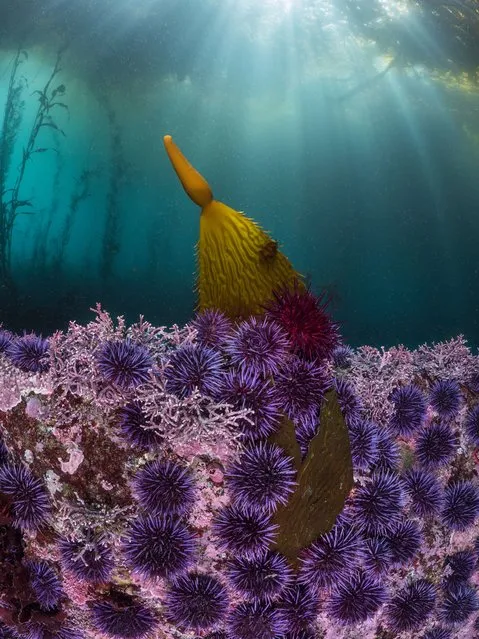
Blades and Spines; Aquatic Life winner. “Kate Vylet was swimming back to shore one day after diving in a thriving kelp forest off the coast of Carmel Bay, California, when she saw a blade of loose kelp being devoured by purple and red sea urchins (Strongylocentrotus purpuratus and Mesocentrotus franciscanus). To her, it illustrated the role urchins can still play in a balanced ecosystem, and she set up her camera to capture nature at work in all its complex ebbs and flows”. (Photo by Kate Vylet/BigPicture)
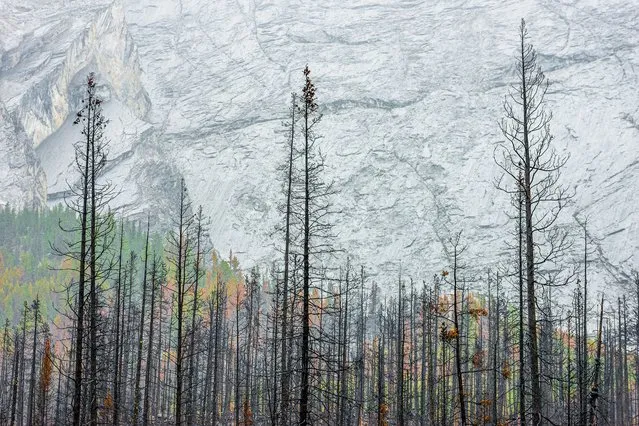
Regeneration; Landscape, Waterscapes, and Flora winner. “Many forests in Jasper National Park in Alberta, Canada, benefit from naturally occurring, low-intensity wildfires. Without fire, trees grow unnaturally dense, and dead logs accumulate on the forest floor. This timber can collide with hotter, drier conditions and cause explosively large wildfires. Now forest managers are trying to reverse a century of misguided management by igniting controlled burns. The landscape may look different, but as this haunting image of a burned spruce forest shows, they can be equally captivating”. (Photo by Miquel Angel/BigPicture)
25 Jun 2023 05:33:00,
post received
0 comments
